Airbus Electric Airplane Flies—For an Hour Per Charge


Airbus Group’s E-Fan, an all-electric trainer aircraft made of composite material, made its first flight last month--proving once again that it is possible to fly without jet fuel.
That’s with one caveat however: The plane can fly for about an hour on a single charge. But still, this seems like a big deal mainly because the largest aerospace and defense company in Europe and the world’s leading commercial aircraft manufacturer is backing it.
The successful first public flight of the electric E-Fan experimental aircraft was the highlight of Airbus Group’s E-Aircraft Day in Bordeaux, France on April 25. The electric E-Fan training aircraft is an experimental demonstrator based on an all-composite construction. Airbus Group and its partners intend to perform research and development to construct a series version of the E-Fan and propose an industrial plan for a production facility close to Bordeaux Airport. In addition, the group’s research efforts support the environmental protection goals of the European Commission, as outlined in its Flightpath 2050 program.
Built with an all-composite construction, the E-Fan is 22 feet long and has a wingspan of 31 feet. It looks like a toy version of a jet aircraft with a pair of nacelles that aren't really jets, but two ducted, variable pitch fans spun by two electric motors with a combined power of 60 kW. The ducting increases the thrust while reducing noise, and by centrally mounting them, the fans provide better control. The E-Fan flies at only 114 miles per hour.
Powering the fans are a series of 250-volt, lithium-ion polymer batteries made by Kokam of South Korea. These batteries are mounted in the inboard section of the wings and carry enough charge for up to one hour of flight. They can be recharged in one hour. Worried about the “recharge” light coming on while up in the air? There’s a backup battery for emergency landings.
Another key technology on the E-Fan is its e-FADEC energy management system, which automatically handles the electrical systems. According to Airbus, this simplifies system controls and, since E-Fan is a trainer, eases the workload of instructors and students.
The E-Fan has zero carbon dioxide emissions in flight and should bring a significant reduction in noise around airfields, according to Airbus, “thus improving relations between local residents and flight schools with long-term prospects for the discreet and economical initial training of future professional pilots.”
“It will not only lead to a further reduction in aircraft emissions and noise to support our environmental goals but will also lead to more economic and efficient aircraft technology in the long run. Our focus is to develop innovations that will help define what tomorrow’s aerospace industry will look like,” said Airbus Group Chief Technical Officer Jean Botti.
So today the E-Fan is a learning platform, tomorrow a larger hybrid version that can fly 80 passengers on short regional trips. That’s apparently the plan. From small beginnings, a revolution in the air.
Image credit: E-Fan Technology Demonstrator, Airbus Group
Fast Fashion Retailer Forever 21 Goes Solar, But is it Enough?
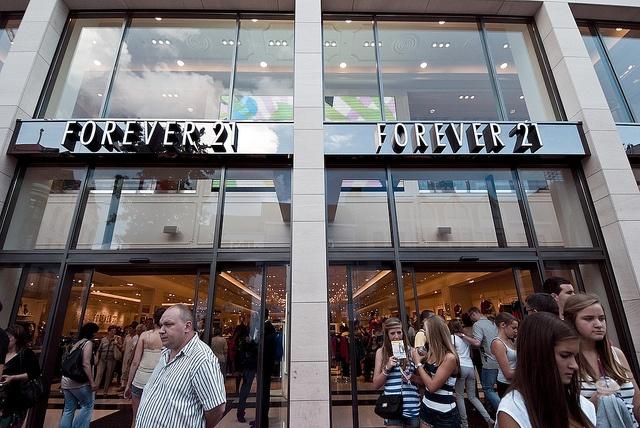

Fashion retail giant Forever 21 recently commenced the installation of a 5.1-megawatt solar power system at its headquarters in the Lincoln Heights neighborhood of Los Angeles. Forever 21 is the latest business to participate in the Los Angeles Department of Water and Power’s Feed-in Tariff (FiT) program, which seeks to encourage renewable energy development within the Los Angeles Basin by partnering with energy producers under a standard purchase contract. The goal of the program is to help the city of Los Angeles meet the 33 percent Renewables Portfolio Standard mandate by 2020. Upon completion of the solar panel installation, manufactured by PermaCity Solar, the power generated from Forever 21’s system will provide enough energy to power 1,450 homes in the area—or the equivalent of removing 1,200 passenger cars from the road.
"The solar system we will construct here on site will provide Forever 21 with the best solar technology available on the market today, designed to deliver reliable, emissions-free electricity over the next 25 years or more," said PermaCity CEO Jonathan Port in a press statement.
Little is known, however, if Forever 21’s new commitment to this rising renewable energy project will spill over into its rather sparse sustainability and environmental policies in the near future. The brand has seen more than its fair share of consumer backlash for its egregious crimes in the name of fashion -- sacrificing the reputation of its trendy cheap aesthetic for accusations of slave labor, environmental degradation and questionable design piracy practices.
According to the brand’s Corporate Social Responsibility clauses, Forever 21 leads a Vendor Audit Program to verify fair treatment of workers in their overseas factories and ensure adequate pay and working conditions. The audit program allegedly maintains a highly trained Vendor Compliance Team, which promotes and enforces lawful and ethical operations at factory sites. Further detailed information on the success and compliance of the program is currently unavailable.
The retailer’s environmental policy leaves much to be desired boasting minuscule initiatives that include installing LED lighting within new stores to reduce energy use, recycling all shipment boxes at its distribution center and transporting products via sea in lieu of air, to help curb carbon emissions.
Perhaps, Forever 21 would do well by marching in line with its retail counterpart H&M that has made remarkable strides and commitments as part of its sustainability goals. H&M is the leading fast fashion retailer -- pushing the proverbial envelope on how its operations benefit from adopting policies that reduce the use of water in the company's manufacturing processes, increase the amount of sustainable materials in its products and recycle old garments to divert textile waste from landfills.
If Forever 21 is betting on one sole solar panel array project to set the tone for its future environmental endeavors, the call for a chief sustainability officer is in order.
Image credit: © 2011 Flickr: StampMedia - Jelka Lepever and Vlad Solovov
Sustainability and 21st Century Corporations: Are We Gaining Enough Ground?
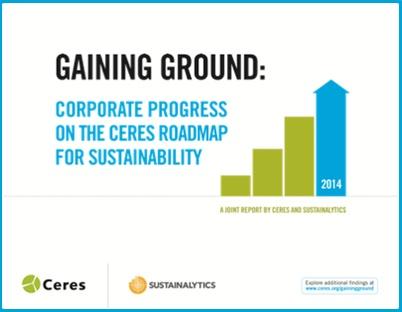

By Julie Gorte
Four years ago, Ceres and Sustainalytics produced a report that it called a roadmap for sustainability for the 21st century corporation, and noted that while there were pockets of leadership in sustainability, these pockets were surrounded by oceans of incrementalism that were insufficient to address the sustainability challenges confronting us. This year, celebrating its 25th anniversary, Ceres released an assessment of the roadmap report with the uplifting title Gaining Ground. The bumper sticker: Corporations are doing better at integrating sustainability into their souls.
That is worth celebrating, to be sure. Some of the specific candles on this celebratory cake include:
- More companies are incorporating sustainability performance into executive compensation packages.
- More than half of the 613 companies evaluated in Gaining Ground are engaging investors on sustainability issues.
- Forty percent of the companies evaluated are engaging employees on sustainability issues.
- Over two-thirds of the companies have taken some steps to reduce greenhouse gas (GHG) emissions.
- Nearly 58 percent of companies have established codes of conduct for suppliers that address human rights and other sustainability issues.
These are important milestones, ones that the companies should be proud of, and the investors and other stakeholders who encouraged them should chalk them up as accomplishments. If we are going to pass on to our children a world that provides at least as many opportunities for enrichment and fulfillment as our forebears did, these companies are the enablers.
But let us also remember that better is not the same as good enough. Reducing GHG emissions is great, but compared to the amount that we must reduce those emissions by in order to avoid crossing the 2 degrees Celsius Rubicon, accomplishments to date are not adequate. Ceres and Sustainalytics also point out that there has been no significant uptick in the percentage of water-intensive companies that assess water-related risks. And while it is good that almost one-fourth of the companies tie executive compensation to measures of sustainability, it is useful to understand the history of executive compensation, and attempts to tie it to performance, which have not been terribly successful. Many companies tie performance-based shares to financial performance, but they use a measure of financial performance -- called Total Shareholder Return -- that does not appear to create much of an incentive for improved performance, according to a recent study. Performance measures that actually drive performance are not as common as they ought to be.
Progress is great, and Ceres and Sustainalytics deserve a great deal of credit for finding a medium and a message that helped to motivate the progress that has been made. Now it’s time to amp it up.
Image courtesy of Ceres
Julie Gorte is Senior Vice President, Sustainable Investing for Pax World.
A Low-Carbon Sustainable Development Pathway for LAC Countries
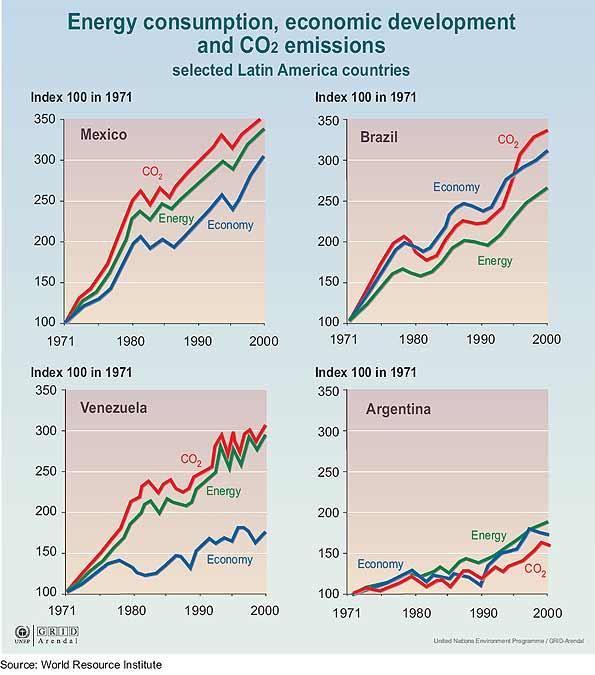

Growth in energy generation capacity has gone hand in hand with economic development over the course of human history. Recently, on the liability side of the ledger, so too have carbon dioxide (CO2) emissions and the natural resource depletion and degradation that have come along with fossil-fuel dependence.
Replacing coal, oil and natural gas with clean, renewable energy sources offers societies across the world an opportunity to decouple socioeconomic development and growth from fossil fuel use and forge new sustainable development pathways.
Spanning a vast area of growing populations and high geographic, biological, cultural, political and economic diversity, renewable energy markets across the Latin America & Caribbean (LAC) region are growing fast as governments, businesses and local communities come to recognize and place greater value on the social and environmental, as well as economic, benefits and advantages solar, wind, biomass, geothermal and other forms of clean, renewable energy have to offer.
Aiming to spur investment in and the deployment of renewable energy technology and generation capacity across the Americas, the American Council on Renewable Energy (ACORE) is strengthening public-private partnerships through its international programs and Power Generation and Infrastructure Initiative. In support of this effort, ACORE recently released a 10-page white paper entitled, “Renewable Energy in Latin America and the Caribbean.”
Renewable Energy in the LAC: Ripe for development
Collectively, the human population in LAC countries totals some 600 million and is growing 1 percent per year. Regional GDP doubled between 1990 and 2013, according to Clean Energy America's (CELA) executive summary in ACORE's report.
Government, business and community leaders across the region are actively seeking out viable sustainable, low-carbon development pathways that offer an alternative to the fossil fuel-driven paths taken by developed countries over the course of the last 150-odd years. Renewable energy is increasingly seen as a key element. As Ramos states,
“The growing economies of Latin America and the Caribbean region are ripe for renewable energy development.”
The challenges
However, high prices, lack of access to reliable sources of electricity and water, outdated electric and water infrastructure, and highly unequal distribution of wealth and income are among the challenges faced by societies across the LAC as they seek to develop their economies, improve the lives and livelihoods of residents, and preserve ecosystems health and integrity.
With demand for electricity in the LAC region expected to double by 2030, “per-capita electricity usage in the region, at 1,987 kWh (kilowatt-hours), is still a third below the world average, and 29 million households do not have access to residential electricity,” Ramos notes.
In order to meet forecast growth in electricity demand, the Economic Commission for Latin America and the Caribbean (ECLAC) estimates that LAC countries will need to invest over $350 billion in new power generation assets between 2013 and 2030. As Ramos writes,
“The present scenario of strong electricity demand growth, decreasing costs for renewable energy, increasing prices of fossil fuels, and concerns about climate change in the LAC region presents interesting opportunities for the expansion of renewable energy.”Realizing Latin America & Caribbean's clean energy potential
Widely varying geography also has played a significant role in making it difficult to establish centralized power infrastructure – both electrical and political – in nations across the LAC region. That makes distributed renewable power generation sources – which can be built quickly on varying scales and with less of a geographic and ecological footprint – that much more practical, beneficial and economically viable. According to Ramos,
“[T]here is significant potential for expanding the use of renewable energy sources, ranging from extensive solar and wind resources from Mexico to Argentina, to geothermal resources along the tectonically active Pacific Rim, to biomass resources throughout the region. These energy sources can help diversify the overall electricity supply mix beyond conventional options such as fossil fuels.”Changing energy policies to promote clean energy growth
Key to carrying out a migration to clean, renewable energy and sustainable development and growth pathways, governments across the region are instituting policies and programs to spur greater deployment of solar and other renewable energy technology and systems.
Due to their size and the degree of development of public and private infrastructure and markets, Brazil, Chile and Mexico are among the regional leaders in this regard. Following up on the institution of national climate change legislation and a national carbon tax on fossil fuels, Mexico's stock exchange, the Bolsa Mexicana de Valores, last November launched the LAC region's first carbon-offset credit exchange.
Headway is being made across the region, however, as governments in Argentina, Ecuador, Peru, along with Caribbean countries, look for viable sustainable-development pathways. In Central America, Costa Rica has garnered international recognition for its efforts to preserve ecosystems and biodiversity, as well as its commitment to becoming the first carbon-neutral society in the world.
Forecasting renewable energy growth across the LAC region
Market researchers at NPD Solarbuzz in a January 2013 report forecast demand for solar photovoltaic (PV) energy across the LAC will boom out to 2017, growing at a compound annual growth rate (CAGR) of 45 percent. As NPD Solarbuzz Analyst Chris Sunsong noted,
“Historically, PV demand was confined to rural off-grid and niche applications, but new renewable energy policies and incentive programs are now opening up the region for strong PV deployment. Set against a backdrop of strong economic growth, expanding energy demand, and increasing electricity prices, the conditions for PV adoption appear particularly attractive.”Clean energy market mechanisms and trends
A combination of net-metering, Renewable Portfolio Standards (RPS), and other market mechanisms are coalescing to support sustained growth across the renewable energy sector.
Given the sharp decline in the costs of solar and wind energy systems, clean, renewable energy alternatives are cheaper than fossil-fuel energy across a growing range of countries in the LAC region, especially when the market-distorting effects of fossil fuel subsidies, as well as the long-term carbon emissions and environmental degradation associated with fossil fuel use, are considered.
Determined, nationwide efforts to replace fossil fuels with renewable energy resources are just beginning to gain traction, however. A few global business leaders, including Virgin Group and Carbon War Room founder Sir Richard Branson, are helping lead the way.
Eliminating fossil fuel subsidies
Governments in the LAC need to significantly scale back, if not eliminate, longstanding fossil fuel subsidies in order to level the energy market playing field, as well as initiate the long-term efforts required to address grid access and interconnection issues across the LAC region, NPD Solarbuzz's Sunsong points out.
“Electricity subsidies in Mexico and low natural gas prices in Peru are also delaying the onset of PV grid-parity for some end-user categories, while import tariffs across the region are keeping PV system costs on the high side.”
Adds CELA's Ramos in ACORE's report, “Policymakers have been compelled to set national carbon reduction and/or clean energy installation goals and to hold auctions for renewable power and biofuels supply contracts to attract additional investment to the region.”
Ramos recognizes and acknowledges the stiff challenges associated with enacting a determined, effective shift away from fossil fuels to renewable energy resources. “Bottlenecks and difficulties in terms of legislation, market maturity, and supply chain constraints are present,” she writes.
Those challenges are gradually being met, she continues, noting that new funding sources are opening up and new market mechanisms are emerging that can accelerate renewable energy investment and deployment. In addition, grass-roots activism and ground-breaking partnerships between NGOs, businesses and industry, governments and local communities are contributing to renewable energy development and growth.
Momentum should be added as the United Nations finalizes its strategic, post-2015 “Sustainable Development Goals,” and multi-lateral, regional and national development banks, such as the World Bank, Inter-American Development Bank (IADB) and Brazilian Development Bank (BNDES) are compelled to allocate more capital and other resources to helping developing countries across the LAC and around the world forge alternative, clean-energy pathways to sustainable development and growth.
*Image credits: 1) ACORE; 2) Bloomberg New Energy Finance; 3) World Resources Institute, UNEP, GRID Arendal
Climate Credit Helping California 'Stay Golden'

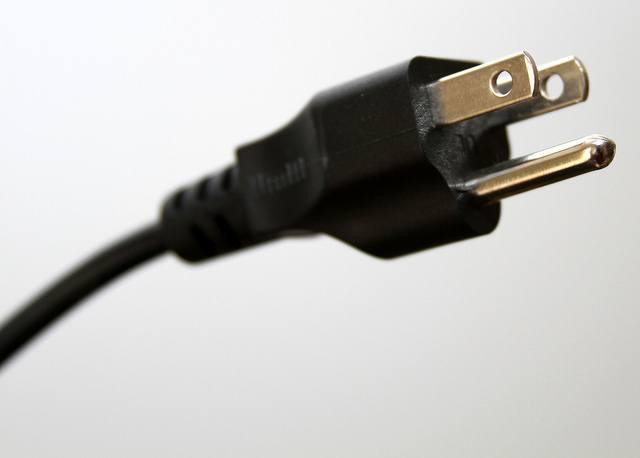
By Tom Bowman
“Stay Golden.” It’s not just a new rallying cry for water efficiency and saving energy in our state — it is a saying that represents the feeling many Californians share for our state’s beautiful landscape, communities and oceans, as well as our leadership in protecting the environment.
As a small business owner, I am aware of the challenges Californians face to “Stay Golden” as we work together to grow our economy and, at the same time, make a real difference in fighting the greatest challenge of our time — climate change.
I write this to say we can, and are, doing both. Californians should be proud.
One positive result of the effort to “Stay Golden” is showing up in your utility bill this month — the California Climate Credit. The Climate Credit is an automatic credit on electricity bills that residents will receive in April and October, and small businesses like mine will receive it every month.
The California Climate Credit comes from a program California is implementing to fight climate change by limiting greenhouse gas pollution. It was developed as a result of landmark legislation called the Global Warming Solutions Act of 2006, also known as AB32, which is fighting climate change and its costly effects by reducing greenhouse gas pollution by 30 percent by 2020.
Since energy use causes about 50 percent of the state’s emissions, using electricity more efficiently in our homes and businesses can have a big impact on helping to clean the air. And the Climate Credit that you and I receive can help each of us reduce our emissions.
Utilities across the state offer small businesses a variety of effective energy efficiency programs and rebates, as well as ideas for ways to use the Climate Credit to generate additional savings on energy bills. Onsite and online energy audits and other programs specific to the type of small business you may own or work for are available through Southern California Edison. For example, my small firm received energy efficient lights at no cost. We also signed up for a peak demand program that lowers our monthly bills.
While we work hard at our jobs, small business owners do get to go home, and the energy and money savings provided by the Climate Credit are available there, too. The Climate Credit could help pay for a programmable thermostat that helps you manage the temperature in your home, or you could use the credit to purchase more efficient lights or an advanced power strip that can help eliminate “standby power” from electronics. Together these small steps will reduce your energy use and help lower your monthly costs.
For small businesses like mine, the Climate Credit provides an opportunity to invest in energy efficiency products, which save our company money immediately — and every single year — and make a positive impact on climate change for the long run.
The California Climate Credit is a true win-win for all of us.
Image credit: Flickr/Samuel M. Livingston
Tom Bowman is a keynote speaker and founder and chairman of Bowman Design Group in Signal Hill, California, which develops communication strategies and creates museum and commercial exhibitions. Bowman Design Group received a 2009 Cool California Small Business of the Year award for reducing its carbon emissions by 65% in less than two years, and is the first marketing communications company to receive APEX/ASTM Sustainable Meetings certification. Bowman is the author of The Green Edge—a guide to cost-effective environmental performance in the event industry—and received the EXPO Elite and international Green Good Design Awards.
Promote those who volunteer most, think tank tells bosses


British business should award promotions or pay rises to employees who have done the most volunteering, according to a new Demos report.
With BITC's Give and Gain Day coming up this Friday, the think tank argues that in-house volunteering programmes are a 'triple win', boosting employees' skills and job satisfaction, reducing sky-high training costs for businesses and benefiting the local community. The scheme could see employees given time off work to mentor pupils to improve their literacy, organise community sports events or give careers advice at nearby schools.
British businesses currently spend around £40bn a year on training, roughly equivalent to the government's annual spending on schools, with individual leadership training courses costing an average of over £2,500 per person. Instead, Demos recommends bosses give their workers 'volunteer days' off work, in addition to their annual leave, and encourage a work culture of volunteering by including targets in performance reviews and using volunteer league tables amongst staff when deciding pay rises and promotions.
Figures cited in the report calculate the average cost per employee of running a volunteer program is just £381.10 a year, less than a third of the average cost per year of training a manager (approx £1,337).
The report includes polling showing 61% of employees agreed volunteering experience made them perform better in their job. Two-thirds (66%) saw a noticeable improvement in their communication skills, with negotiating (45%), team-working (43%) and leadership skills (41%) also noticing significant progress.
As part of the project Demos interviewed several business leaders, who backed the findings and reinforced the idea that employer volunteering schemes were a much more cost effective way of upskilling their workforce and retaining staff than expensive training courses.
The report is being published by Demos this Thursday.
A recent poll showed 58% of employees are likely to volunteer if they receive support from their employer, with less than one in five (17%) unlikely to take up the opportunity.
The report makes a distinction between 'skills-based volunteering' – utilising the employees existing professional skill-set such as an accounting doing the books for a charity – and additional volunteering – boosting soft skills such as communication, leadership and organisation.
Picture credit: © Segoviadesign | Dreamstime.com
Recap: #3pChat on Sustainable Seafood


On Thursday, May 8, we hosted a series-focused Tweet Jam, which was one of our highest-impact, and most well-attended online chats to date. If you haven't yet seen our ongoing sustainable seafood series, please check it out.
Our sponsors Future of Fish, Bell Aquaculture, Verlasso Salmon, Fish Choice and Seafood Watch, along with TriplePundit's writing staff, have been contributing their insights on the subject, and this Twitter Chat allowed us to expand upon and explore the issues in more detail.
Participating organizations included Oceana, Ocean Conservancy, Environmental Defense Fund, Blue Ocean Institute, BlueYou Consulting, Upwell, Sea to Table, Chefs Collaborative, The Terramar Project, and numerous others. Our four distinguished panelists were:
- George H. Leonard – Chief Scientist, Ocean Conservancy - @GeorgeHLeonard
- Tim Fitzgerald – Environmental Defense Fund Oceans Program, Senior Advisor - @hawaiifitz
- Jason Simas – iPura Foods, Director of Communications – @iPura
- Clare Leschin-Hoar – Independent Food Writer / Journalist – @c_leschin
To see the full conversation, please follow the #3pChat hashtag on Twitter.
Image credit: flickr/Challenge Program on Food and Water
3p Weekend: Top 5 Corporate Bike-to-Work Incentives in the U.S.
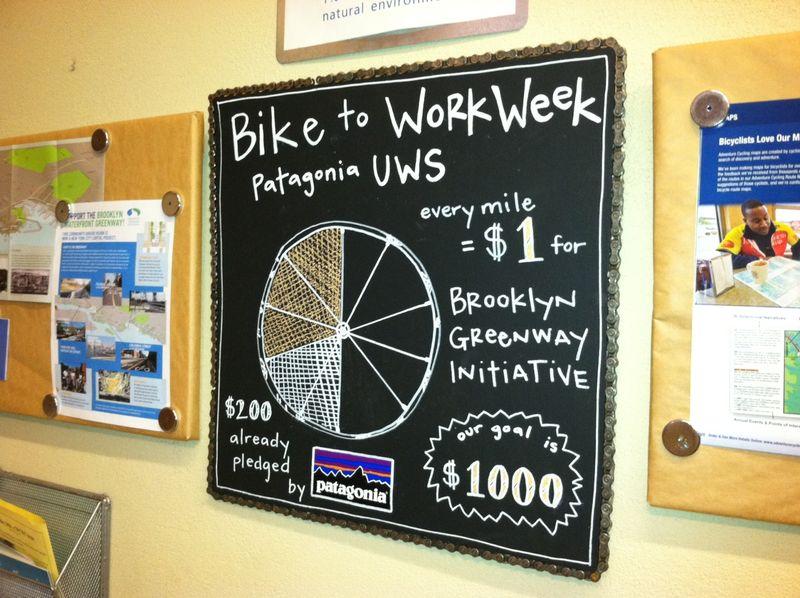

With a busy week behind you and the weekend within reach, there’s no shame in taking things a bit easy on Friday afternoon. With this in mind, every Friday TriplePundit will give you a fun, easy read on a topic you care about. So, take a break from those endless email threads, and spend five minutes catching up on the latest trends in sustainability and business.
We all know that biking to work is a great way to cut back on carbon emissions. But in case a trimmer waistline and a lighter footprint isn't enough motivation for busy commuters, a growing number of companies are sweetening the deal with perks and incentives designed to get employees pedaling. Here are five of our favorites.
1. Clif Bar
Clif Bar, which employs more than 300 employees at its Emeryville, Calif. headquarters, takes bike-to-work incentives to a whole new level. The company’s Sustainability Benefits Program includes an incentive of up to $500 to buy or repair a commuter bike. Employees who walk, bike, carpool or take public transportation to work can also earn points for each trip -- redeemable for rewards like cash, massages and Clif gear.2. New Belgium Brewing
Cars are a rare sight to see at New Belgium Brewing's flagship brewery in Fort Collins, Colo. It will likely be the same story at its new location in downtown Ashville, N.C., and it's not hard to see why.
After a year on the job, each New Belgium employee receives a free limited release Fat Tire Cruiser bike, in honor of the company's best-selling Fat Tire Amber Ale. Employees can also borrow a cruiser for local errands and lunch breaks.
3. Honest Tea
Headquartered in in Bethesda, Md., organic beverage maker Honest Tea gives its employees who either bike or walk to work $27.50 extra in their paychecks monthly. In addition, in the summer of 2007, the company bought each of its then 52 employees Jamis bikes.
The company's president and 'TeaEO' Seth Goldman bikes about a mile to work every day, so he understands the perils of the bicycle commuter. When the company moved into its current office building back in 2007, Goldman insisted on having showers installed in the bathrooms -- an unsung perk we're sure his bike-to-work employees (and those who share their working spaces) are eternally grateful for.
4. Patagonia
Patagonia's Drive-Less program provides a monetary incentive for employees to bike, walk, carpool or take public transit to work. It pays all U.S. and Canadian employees $2 per trip, up to two trips per day. Each employee can earn up to $500 (pre-tax) per year.
In the first year of the program, more than 900 employees participated. As a collective result, in that first year Patagonia employees drove 690,000 fewer miles, cut CO2 emissions by 500,000 pounds and saved 25,700 gallons of fuel.
5. Jamba Juice
Also headquartered in Emeryville, Calif., Jamba Juice provides some pretty sweet perks for peddlers. The company offers a set of bright orange loaner bikes for employees to use for errands and lunch breaks, as well as plenty of space for bike commuters to park their own rides.
The company has also developed an extensive wellness program that includes health insurance premium discounts in exchange for completing challenges -- including participating in Bike to Work Day, attending a bicycle repair class or going on a practice ride. Jamba Juice has become known in the area for its bike-friendly ways and was named as one of the most bike-friendly businesses of the year by local advocacy group Bike East Bay.
Images courtesy of Patagonia's The Cleanest Line blog
Based in Philadelphia, Mary Mazzoni is an editor at TriplePundit. She is also a freelance journalist who frequently writes about sustainability, corporate social responsibility and clean tech. Her work has appeared on the Huffington Post, Sustainable Brands, Earth911 and The Daily Meal. You can follow her on Twitter @mary_mazzoni.
Obama: "We Don't Fear the Future" of Climate Change
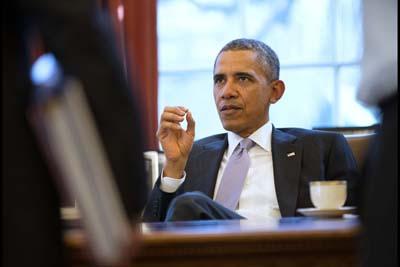

On the heels of the administration’s release of the Third National Climate Assessment report, President Barack Obama today announced an array of executive actions and public and private sector commitments to increase solar installations and energy efficiency improvements, strengthen energy efficiency standards, and bolster the solar industry workforce. The actions and pledges that Obama laid out will deploy enough solar energy to power nearly 130,000 homes, cut carbon emissions by the equivalent of taking 80 million cars off the road and save businesses $26 billion on their energy bills, the White House said in a statement.
“We don’t look backwards. We look forward. We don’t fear the future,” Obama said on why it’s time to conserve energy, promote renewables and take action on climate change.
Speaking at a Walmart store in Mountain View, Calif., Obama said that more than 300 public agencies, multifamily and affordable housing organizations, rural electric cooperatives, and businesses like Home Depot, Ikea, Google, Wal-mart and Goldman Sachs have signed on to install solar panels – representing a total of 850 megawatts of solar energy. Twenty-five public agencies, multifamily housing organizations, businesses and manufacturers are also joining the president’s Better Building Challenge, pledging to increase the energy efficiency of more than 1 billion square feet of their buildings – an area the size of 17,000 football fields -- by at least 20 percent by 2020.
To help build the growing green economy, the Department of Energy (DOE) will launch community college programs across the U.S. to train 50,000 workers to enter the solar industry by 2020, Obama said, building on the DOE’s Solar Instructor Training Network of almost 400 community colleges in 49 states that have provided solar workforce training for over 22,000 students since 2010.
Recognizing that energy efficiency is the most cost-effective form of energy, the president also announced plans to invest $2 billion in energy efficiency upgrades to federal buildings over the next three years. Combined with a similar $2 billion commitment to federal energy efficiency improvements in 2011, the administration is now on track to offer $4 billion in energy efficiency performance contracts through 2016, which will create, according to independent studies, tens of thousands of new construction jobs, the White House said in a statement. The additional $2 billion commitment will not come out of taxpayers’ pockets, according to the White House: The administration plans to pay for the upfront cost of projects with the savings realized from previous energy efficiency upgrades.
Also today, the DOE publicized its two new energy efficiency standards for commercial walk-in cooler and freezers, like the ones used to display milk and other refrigerated items in grocery stores, and for electric motors used to power devices such as conveyor belts and escalators. In addition to saving businesses money, these new regulations will cut greenhouse gas emissions by about 158 million metric tons through 2030 – the equivalent of the annual electricity use of more than 21 million U.S. homes. These two new standards, along with the five other standards issued under the Obama administration, will help the country achieve 70 percent of Obama’s goal to reduce carbon emissions by at least 3 billion metric tons by 2030, according to a White House statement.
The DOE also preliminarily affirmed today that the building industry’s latest commercial building energy code will provide an additional 8.5 percent energy savings over the previous standards, as well as an additional 30 percent savings compared to current statewide energy codes, the White House said in a statement. The updated building code will slash carbon emissions by 230 million metric tons by 2030.
The Obama administration also revealed several innovative financing solutions for energy efficiency upgrades and solar projects, since paying for these improvements is the biggest hurdle for residents and businesses to overcome. Fannie Mae, the Department of Housing and Urban Development, and the Federal Housing Administration announced that they will expand Green Preservation Plus, their mortgage loan that provides additional loan proceeds to owners of affordable housing properties to make energy- and water-saving improvements equal to at least 5 percent of their mortgage loan. The General Services Administration also reported that it is looking to purchase solar arrays in Northern California and the Washington, D.C. area with Federal Aggregated Solar Procurements, modeled after the Defense Department’s successful coordinated purchases of renewables. In addition, the White House said that the Treasury Department and Internal Revenue Service will soon clarify how investment rules relate to renewable energy installations, which should help promote investment in the clean energy sector.
"Today, America is closer to energy independence than we’ve been in decades," Obama said.
While the country may have a long way to go before reaching energy independence and carbon neutrality, it's encouraging to see so many actors in the public and private sectors taking significant, concrete steps towards cutting carbon emissions.
Image credit: Official White House photo by Pete Souza
Passionate about both writing and sustainability, Alexis Petru is freelance journalist based in the San Francisco Bay Area whose work has appeared on Earth911, Huffington Post and Patch.com. Prior to working as a writer, she coordinated environmental programs for Bay Area cities and counties. Connect with Alexis on Twitter at @alexispetru
Sustainable Fish Farming: Global-Scale Aquaculture in the Big City
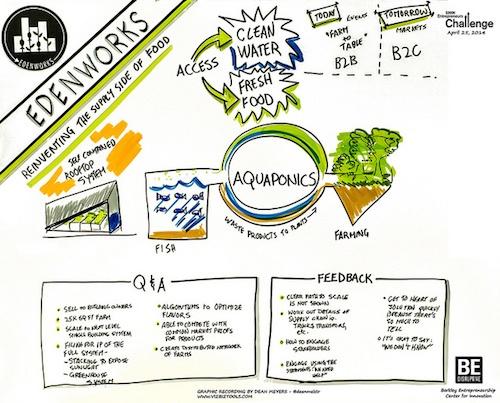

Editor’s note: This is the third post in a three-part series on sustainable fish farming startups. In case you missed it, you can read the first post here and the second post here.
In the first two posts of this series, we introduced Kampachi Farms, an open-ocean mariculture startup on the Big Island of Hawaii co-founded by Neil Sims and Michael Bullock. When their mariculture fishery, the Valella project, got started in early 2012, the future of aquaculture and mariculture was uncertain, as a lawsuit brought by Food and Water Watch against the National Oceanic and Atmospheric Administration (NOAA) pertaining to aquaculture was wending its way through court. The suit brought the founders of Valella into a complicated area that spanned legislation, the role of governments and NGOs, and how to best help environmental groups understand mariculture.
When I recently spoke to Sims for a follow-up interview, he was preparing to travel to the Hague to participate in the Global Ocean Action Summit for Blue Development.
“This is looking at the way that we can grow marine industries in a scalable, responsible manner. Work to feed the planet, work to heal the oceans from the depredation that we’ve put upon her and harness the energy of commercial development to do that.”
From the basic research, Sims and his colleagues began way back with Kona Blue Water Farms, to the Velella test projects (beta and gamma) and on to global operations for ocean mariculture, this is what is near and dear to Sims heart -- finding ways to feed a hungry planet while healing a depleted ocean.
An ocean and a continent away, in New York City, the mission is the same, just replace the blue Pacific with the rooftop of a Manhattan ironworks factory.
Edenworks: Building an inner-city Garden of Eden
Jason Green began his career in neuroscience. But curiosity and a sense of higher purpose got him thinking about urban food systems, the idea of "food deserts” and how these current systems are failing these pockets of malnutrition and hunger, while lacking the resilience to withstand the pressures of climate change and population growth.
That's a lot to think about, so Green didn't give up his day job right away.
“My background is in bioengineering and neuroscience," says Green, founder of Edenworks, an aquaponics startup in New York City. "I was doing my thing in a neuroscience lab at Albert Einstein (College of Medicine).” About two years ago Green started tinkering with aquaponics on the weekends, designing his own consumer aquaponic farm in his apartment.
“I got aphids and fungus and all sorts of stuff," laughs Green. "I was like 'there’s got to be a better way!’ So I started looking into hydroponics and aeroponics and eventually settled on aquaponics. I realized there was no easy consumer solution for an aquaponics system."
Green launched Edenworks one year ago with a $20,000 grant from New York University's Green Grant Program. Now nearing completion of the 1,000-square-foot flagship farm, Edenworks sits on the top floor of a commercial ironworks in New York City.
New aquaponics: Quantifying the ecosystem
Aquaponics isn’t a new technology. As far back as 1000 B.C. (give or take). Chinese farmers discovered that they could increase the yield of their rice paddies when they let fish swim around and fertilize them with their waste.
“How do we take that very old technology, that was reliant on existing ecology, and create ecosystems to grow food that are separate from the land,” says Green. “There are more than 7 billion of us, 9 billion by 2050. We can’t rely on the land to produce our food. So the choices are, you know. either eugenics, mass starvation or figuring out how to feed ourselves from the cities.”
It is from the land, and the rich soil that supports the nutritious and delicious food we eat, that Green takes an important lesson for Edenworks. "Aquaponics, and especially hydroponics, really haven’t been thinking about how to create the ideal ecology. Delicious food doesn’t come from fertilizer poured on barren topsoil.”
It’s this ecosystem of rich, highly organic soil that Green and his team are working to recreate at Edenworks. “We’re trying to replicate all the richness of soil by figuring out the chemistry that we need to create delicious, living food." A network of sensors continually monitor the environmental chemistry of the farm, Green explains. When harvested, the food is tasted, going through a regime by Edenworks' head-of-product, Sam Yoo, a professional chef.
“We’ve basically taken his palette, what he looks for as a chef … and quantified that.” Using machine algorithms they can then correlate the chemistry to “the things we care about,” Green says, such as nutritional density, flavor and texture.
The task, explains Green is “figuring out how to optimize aquaponics ecosystems that are separate from [land-based] ecology,” but still mimic the best topsoil to produce the tastiest, most nutritious food.
“What we’re building here [at Edenworks] is a lab,” Green says. "We’re going to be selling food from it, but it’s really a lab. It’s a place for us to learn and experiment."
Modular and scalable
"What Edenworks is doing a little bit differently is that we combine aquaponics with vertical design and vertical farming. The goal is to create a model here that we can scale elsewhere.”
Edenworks is also uses a passive solar design. “We use passive solar greenhouses, we don’t use any kind of LEDs, fluorescent or high-pressure sodium or anything like that.” Based on solar radiometry testing, Green says they can stack the vertical greenhouse section six-high, or 10 feet at the top module, with plenty of sun for the entire system.
The vertical design means Edenworks can effectively grow six times the produce for the same square footage of conventional systems, while using 90 percent less water and energy than traditional agri-farming.
Fish and produce
“We design, build and operate the farms and then sell produce and seafood directly to restaurants and business customers. We’d like to get to the scale where we’re selling directly to grocery stores, especially for the seafood because restaurants don’t really want the Tilapia, but even Whole Foods, I just saw Tilapia there for $12 a pound. So certainly it’s something that people eat.”
Tilapia is one of the most common fish species used for both fish and aquaponics farming, and it is the principal fish stock for Edenfarms, along with catfish and prawns.
“The prawn is really interesting,” Green says. “They go for $15 a pound as opposed to anywhere from $8 to $12 a pound for Tilapia and Catfish.”
“Tilapia are perfectly happy with poor water conditions, you can stock them very densely … they’re really ideal for aquaculture.” You're much more likely to find shrimp, tuna or salmon on a restaurant menu than Tilapia. Nonetheless, Tilapia is produced in more than 100 countries and ranks fourth -- behind those species just mentioned -- as the most-consumed seafood globally, according to the Monterey Bay Aquarium’s Seafood Watch. But only 5 percent of Tilapia is farmed in the U.S.; the rest is imported.
Creating a new zeitgeist
The long-term vision for Green is to integrate the Edenworks model of food production into building design and development.
“What is unique about Edenworks is the synergistic and whole systems approach,” Green says. “When you put a farm on a rooftop, you basically create this insulating layer.”
The idea is to create not only a solution for local food production but to other building infrastructure challenges as well.
“Maybe even preconditioning your air for the building. You oxygenate it, you filter it, you temper it before you push it into the building.Ultimately designing buildings that take into consideration the waste management of the building, the energy needs, the food needs, all integrated into these closed-loop ecosystems."
As the idea grows and hopefully scales across rooftops and cities, all these systems and data can be remotely monitored by a web app, creating a distributed network of farms.
“I really see it as a very scalable solution,” Green says. “The goal for us is to be physically and digitally scalable... you have to create a new zeitgeist. You can’t expect that if something is unfamiliar that it’s going to become the way things are. It has to be obvious in order for it to be the way things are.”
Wait-and-see attitude
Many may still have a cautious, wait-and-see approach to what Edenworks is doing, but when prospective partners grasp the potential of putting “Eden" on their roof, Green says that developers and building managers often tell him, based on the projected increase in building efficiency, that they are more than willing to provide the space rent-free. The increased energy efficiency is the rent.
“By creating this huge insulating layer on the roof, we think that we can increase the HVAC efficiency by about 30 percent. We exist in their space, and they see a return.”
The vertical, passive-solar aquaponics farm built on the Edenworks model provides tasty, nutritious, chemical-free fish and produce to local markets. Scaled through cities across the northeast and eventually the entire country, a distributed network of urban aquaponics farms can supply economical, sustainably-grown food where it is needed most.
Resistance to change
This isn’t to say that Edenworks doesn’t face an uphill climb in public perception, just as with Sims. Green reels off criticisms he hears from naysayers on almost a daily basis. But, like Sims, he takes the criticism head-on and offers solutions to try instead of reasons to maintain an unsustainable status quo. Building scalable, modular, and efficient passive-solar aquaponics farms that integrate into building infrastructure, create "ecologies" that mimic rich soils, and experiment with different fish species to supply nutritious animal protein - all these ideas answer these critics and ask only that these new ideas be given a change to grow.
"There is resistance to every great innovation,” says Green. Echoing Sims' experience, Green says “Even exploring new ideas somehow puts them at risk, that somehow trying something new exposes them to risk of harm or something. I think that people only recently have started thinking about food and energy as problems, that for so long, with the Jevons Paradox has been ignored. We’ve always just tried to do more with less. You make more efficient systems and what ends up happening? Like the Jevons Paradox says, the more efficient you get the more resources you use. And people forgot about that for a really long time.”
“And I think also the emphasis has been for so long on efficiency and not quality. You can think about that in terms of energy, you can think about that in terms of food-like products over food. It’s more attractive to buy something like a Weight Watchers frozen dinner filled with chemicals than just to buy fresh vegetables, and have an equally caloric dinner, but one is healthy and the other is synthetic - and probably carcinogenic.”
Problems like this have plagued humanity for the last hundred years, but figuring “whole systems” approaches to address them are only now are gaining traction. “With the confluence of climate change, peak oil, peak coal, even peak water, people are trying to think about [these issues] in a holistic way.”
Proving the idea
Will it work? Of course it’s too soon to tell. But there doesn’t seem to be any reason for not allowing Green and his colleagues to build out the proof-of-concept lab, experiment and find out what works and what doesn’t.
That goes for Kampachi Farms as well. Sims and his colleagues have helped establish the science, the law and the concept. Overcoming public perception of farmed fish and resistance to eating produce grown in a warehouse can be an uphill battle.
Sims feels that he’s been portrayed as being on the “wrong side of the law" by many environmentalists. But, as he points out, the law is settled. And now so is the science.
What is important to Sims, Green and many other passionate and dedicated people like them, is being on the right side of history. Meeting the challenges dead-on, answering their critics, and working to answer the ultimate question of which we began: how to feed seven, then soon nine, then eleven billion people, without wrecking the planet.
Supporting responsible fish farming and modern aguaponics to help feed the billions of people that increasingly rely on it is the right side of history.
To that point Sims sums it up succinctly:
“… because if you want them to eat beef, the planet is screwed.”
Image credit: Flickr/deanmeyers
Read the rest of Startups in Sustainable Fish Farming:
- Part 1: Sustainable Fish Startups: From the Open Seas to the Inner City
- Part 2: The Future of Mariculture: Bridging the Gap Between Startups, Lawmakers and NGOs
- Part 3: Sustainable Fish Farming: Global-Scale Aquaculture in the Big City